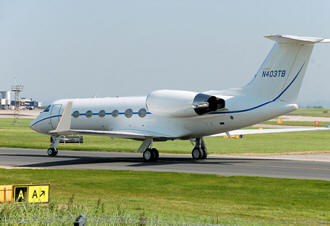|
|||||||||||||||||
|
|
|
|||
|
By Daniel Baxter |
||||
 |
January 6, 2011 - Gulfstream Aerospace recently received
approval from Transport
Transport AEDM mitigates the risk of occupant injury due to rapid depressurization by automatically lowering the aircraft to the appropriate altitude. Should the pilots become incapacitated due to depressurization. |
|||
|
The AEDM
automatically turns the aircraft 90 degrees and lowers it to
15,000 feet (4,572 m) altitude and 250 knots air speed. This
maneuver allows the flight crew to regain consciousness and
assume control of the aircraft. The G450 and G350 join the GV,
G550 and G500 in being authorized by Transport
These
attributes enable the aircraft to meet Transport It has a "PlaneView" cockpit with 4 Honeywell 21 EFIS screens, and a Gulfstream-designed cursor control system. It also has the "Enhanced Vision System" (EVS), an infrared camera that displays an image of the view in front of the camera on a head up display. EVS permits the aircraft to land in lower-visibility instrument meteorological conditions than a non-EVS-equipped aircraft. |
||||

